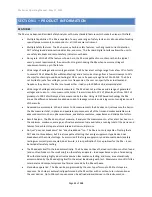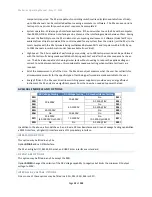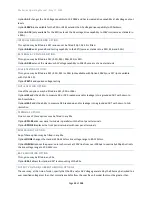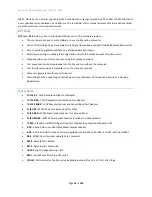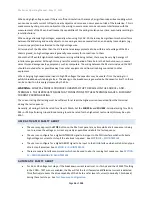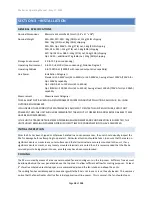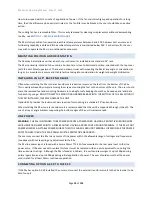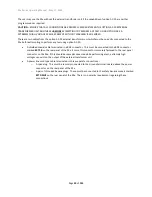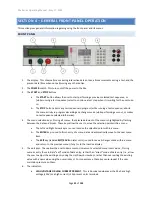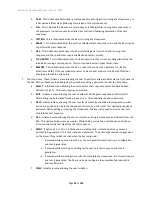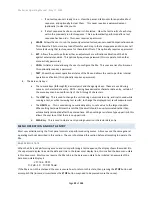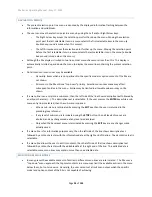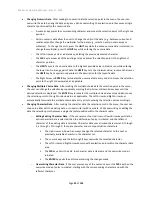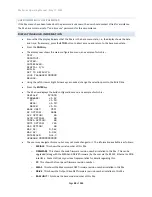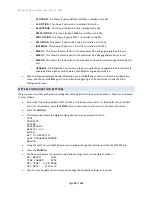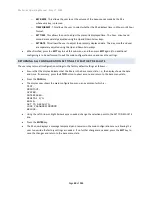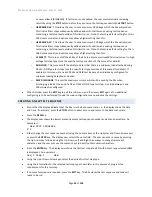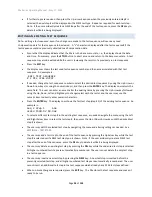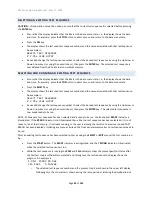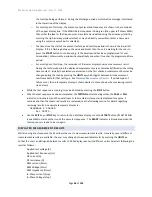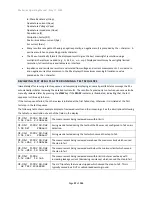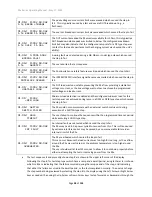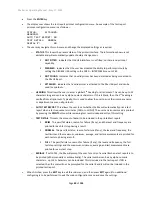
95x Series Operating Manual - May 17, 2022
Page
25
of
155
•
Changing Numeric Data
. After making the numeric data the selection point in the menu, the user can
overwrite the data by using the data entry keys. While overwriting, the selection point becomes a single
character position within the numeric data.
o
A numeric key places the corresponding character and moves the selection point to the right one
position.
o
Certain numeric data allow the user to change the units of the data (e.g., between current and
resistance) and/or change the multiplier for the data (e.g., select an entry in microamps or
milliamps). To change the units, press the
UNIT
key while the entire numeric data is selected; to
change the multiplier, press the
UNIT
key while entering the numeric data.
o
The Left Arrow key acts as a delete key, deleting the previously entered character.
o
The
CLR
key removes all of the existing entry and places the selection point in the rightmost
character position.
o
The
LIMIT
key sets the numeric data to the highest possible value in most cases; while entering
the lower limit in a range pair of data the
LIMIT
key sets the minimum value; in some other cases
the
LIMIT
key has a special use denoted in the description for that specific data.
o
The Right Arrow or
ENTER
key terminates the numerical data entry and also moves the selection
point to the right or downwards, as applicable.
•
Changing Multiple Choice Data
. After making the multiple-choice data the selection point in the menu,
the user can change the selection by repeatedly pressing the Up Arrow or Down Arrow keys until the
desired selection is displayed. The
ENTER
key terminates the multiple-choice data entry and also moves
the selection point to the right or downwards, as applicable. The Left Arrow and Right Arrow keys
automatically terminate the multiple-choice data entry prior to moving the selection point accordingly.
•
Changing Character Data
. After making the character data the selection point in the menu, the user can
choose to either edit the existing data, or to overwrite it with new data. While overwriting or editing the
data the selection point becomes a single character position within the character data.
o
Editing Existing Character Data
. If the user presses the Up Arrow or Down Arrow key while the
entire character data is selected, then the edit mode of entry is initiated, and the leftmost
character of the existing data is selected. Character data uses a limited character set; A through
Z, a through z, 0 through 9, the space character and most punctuation characters.
▪
The Up Arrow and Down Arrow keys change the selected character to the next or
previously available character in the character set.
▪
The numeric keys and the
A
through
F
keys overwrite the selected character.
▪
The Left Arrow and Right Arrow keys move the selection point within the character data
area.
▪
The
CLR
key aborts the edit, the character data is cleared, and the overwrite mode is
initiated.
▪
The
ENTER
key exits the edit mode retaining the changes made.
o
Overwriting Character Data
. If the user presses any of the numeric keys or the
CLR
key then the
overwrite mode of entry is initiated, starting with the corresponding character and with the
leftmost character.

